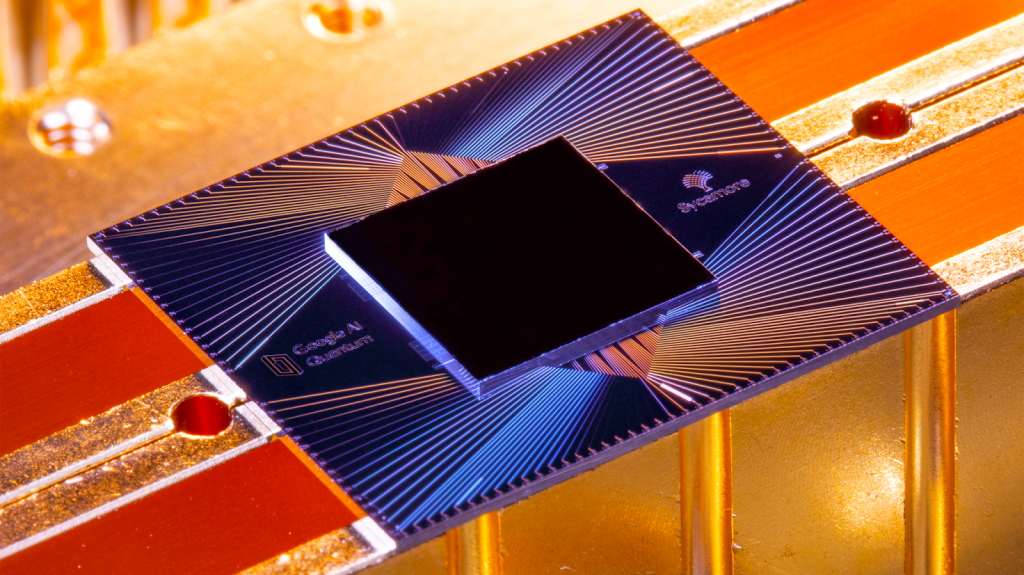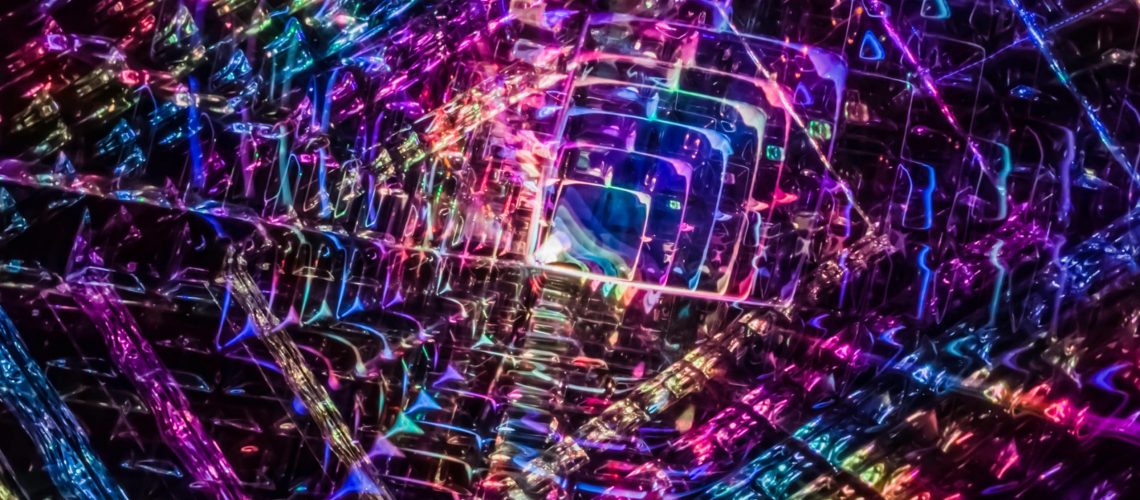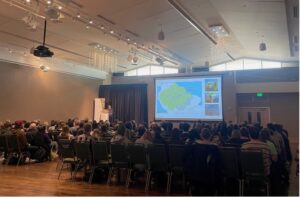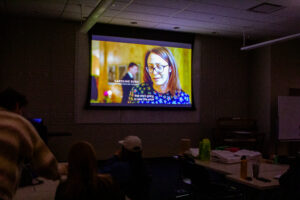Guest Post By Cassidy Jackson, 2020-2021 Sustainability Leadership Fellow and Ph.D. Candidate in the Department of Chemistry
With every passing year climate change affects us more and more, and we must make choices in our lives to combat it. Maybe you have started biking to work to reduce your contribution to CO2 emissions. You have possibly started a compost pile in your backyard to reduce your carbon footprint. You might have changed from a typical grocer to one that offers a bulk selection to reduce plastic waste. All these lifestyle changes aim to mitigate the negative impacts of climate change. However, there is a need for a systemic sustainability change which can only be achieved through a strong interdisciplinary population in STEM.

While we adapt our lifestyles to combat environmental issues individually, is it possible to combat climate change on a much larger scale by predicting the answers to our biggest environmental issues? Climate change is a location-specific and simultaneously a global challenge. What if we knew what challenges we should face first–CO2 emissions? Agriculture? Clean energy? What if there were a way to predict the best use of our efforts?
Time is of the essence and it would advantageous if we could just know what to focus on first. This answer may be closer than we think if we can rely on the unimaginable power of quantum computing. As weird as it may seem, quantum computing is emerging as a key player in combating climate change by reshaping our current technological landscape. This technology could give scientists the gift of time by answering complex problems faster (thousands of years faster) than current computers, and by computing answers that modern-day computers simply cannot solve. Some of these problems are directly applicable to sustainability, such as foreseeing the most powerful solar cell material, the next best catalyst for making new molecules, or the most efficient battery, making the power of quantum computing and a sustainable future intimately intertwined.
Currently, we rely on energy intensive procedures to do processes nature seems to do effortlessly, but quantum computing may be able to change that. Presently, we depend on the Haber-Bosch Process to turn inert N2 into ammonia, most of which is then used for fertilizer. For that reason, this process is vital for food security since climate change is impacting crop productions worldwide. While the Haber-Bosch Process is an extremely energy-consuming industrial procedure that is detrimental to the environment, the nitrogenase enzyme is nature’s answer to nitrogen fixation. A synthetic copy of nature’s “Haber-Bosch process” would be powerful for lowering the environmental impact of our current method. The problem is that it can be difficult to chemically synthesize a mimic of a natural process. Proteins are extremely large and complex, and while the active site, which is the place where all the chemistry happens, may only be a few atoms, its efficiency can be impacted by large structure around it. Instead of chemically synthesizing every possible mimic, quantum computing may allow us to predict what complex would be the most efficient synthetic copy of the nitrogenase enzyme’s active site, saving us decades of failed experiments!
Another challenge we could address with quantum computing is clean energy. Superconducting materials allow for the transfer of electricity without any energy loss. A conductive material, such as a power cord, will lose some energy along the way, like a leaky engine in a car. While superconductors are “leak-free,” most only operate at -452 °F. The process of cooling the material down is prohibitively energy intensive. Although room temperature superconductors exist, there is only one reported to date and requires immensely high applied pressures to operate. Quantum computing could aid us in predicting the correct combination of elements to make superconducting materials that could operate at higher temperatures. Such a material would allow transport of electricity harnessed from sunny Arizona all the to New York City without any loss of energy. Since we want to soak up the sun in Arizona, we could also investigate improved solar cells. The current record for a solar cell is 47.1% energy converted of the total energy harnessed from the sun, so there is room for improvement. Potentially, predictions could be made of what could be better solar cell materials so more energy could be harnessed from the sun. This kind of power could pave the way to completely renewable energy sources.

If we want to use quantum computers, then we need to know how to build them. A quantum computer compared to classical computer is like travelling in an airplane versus on a bike: you can make it to where you are going thousands of times faster in an airplane and can go places you cannot reach on a bike, like across the ocean. In a classical computer, the processing power is based on the number of binary digits, or “bits,” where more bits provide a faster and more accurate computer. Each bit within binary code has two settings, 0 or 1, analogous to a simple light switch that can either be on or off. Quantum computing is based on quantum bits, or “qubits,” analogous to a dimmer switch that can be on, off, or somewhere in between. This “in between” state of a qubit, or combination of on and off, is called a superposition and is achieved by exploiting the unique quantum properties in an atom or particle. The superposition is the powerhouse of a quantum computer because it allows for uncertainty, unlike bits. A superposition is what makes the processing power of a quantum computer extremely superior to a classical computer and what drives faster computing times.
Unfortunately, this superposition state is extremely difficult to control and does not persist for very long. A grand challenge in the implementation and realization of quantum computing is generating a superposition time that is long enough for useful calculations. Superposition times tend to get longer when they are isolated away from any “noise” in the environment. To understand why the environment impacts the superposition, we can think of a superposition like going into a deep sleep. Typically, a deep sleep is more likely to happen if there is little to no light, sounds, or distractions. You’ll sleep much better in a quiet and dark room alone, right? There has been significant progress in prolonging superposition times by eliminating noise. Except, in a quantum computer, there will likely be other elements, stray charges, and magnetic fields, all of which add to the superposition’s environment. It will be like trying to sleep in a subway station with people bumping into you, performers playing loud instruments, and periodic announcements for the incoming train. Therefore, for integration into a computer we need to understand how to engineer long superposition times, or long and deep sleeps, in a noisy subway station. There is emerging research aimed at understanding how to chemically design the best system for a superposition to exist in that busy subway station, working to engineer noise-resistant qubits.

While the full potential of quantum computing is still decades away, recent breakthroughs indicate we could rely on the first usable machines in just a few years to help combat climate change. Last year, Google published a paper in the journal Nature with evidence to support the development of quantum supremacy. Quantum supremacy means that the quantum computer they designed could compute something that a classical computer simply could not compute. For example, quantum supremacy could allow us to simulate molecules and their properties and predict how they interact and react with other molecules, forming the cornerstone for the world we live in. This result brings us one step closer to understanding, with atomic precision, our future. When—not if—we realize the power of quantum computing, we will be able to change our future to be more sustainable.





